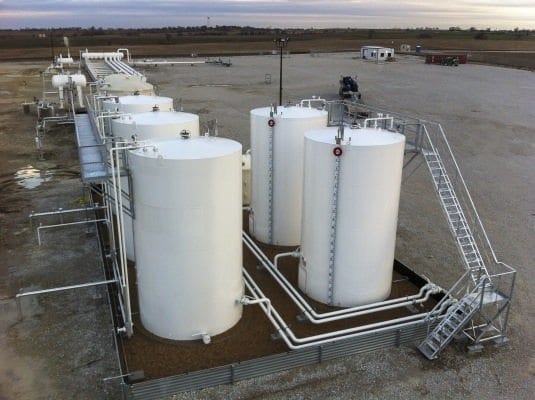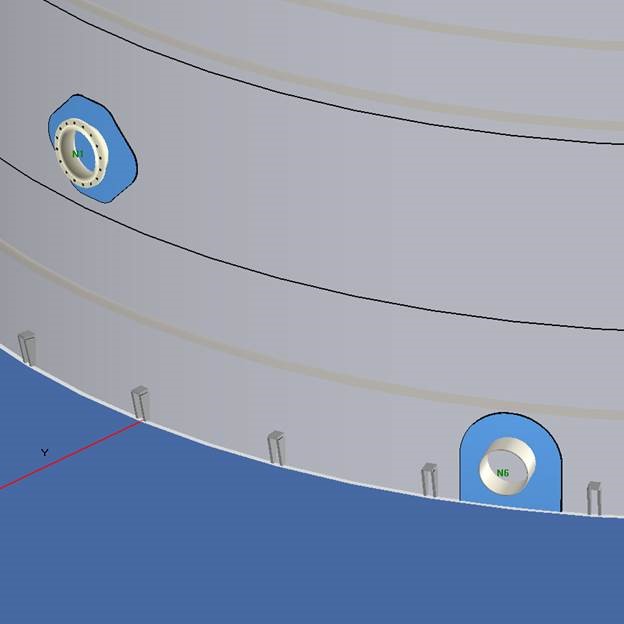The Future of API 650 Welding Inspection with Modern Inspection Systems Integration
Wiki Article
Understanding the Importance of Welding Inspection in Quality Control Processes
Welding inspection is an essential part of quality control in building and manufacturing. It assures that welds follow established standards, which is crucial for architectural honesty. Numerous examination techniques, from visual to ultrasonic screening, assistance determine defects early. This proactive approach not just stops expensive repairs however likewise boosts security. Comprehending the subtleties of welding examination can expose its more comprehensive ramifications for sector conformity and reputation. API 650 Welding Inspection. What exists underneath the surface of these practices?The Function of Welding Assessment in Quality Control
While welding is a critical process in numerous sectors, its quality and honesty pivot considerably on efficient inspection techniques. Welding examination offers as a safeguard, guaranteeing that welds fulfill well established criteria and specifications. This procedure not just determines issues but likewise assesses the general handiwork, thus contributing to the safety and security and durability of bonded frameworks. Examinations are integral to quality control, as they help keep and protect against pricey failures conformity with sector laws. By employing proficient inspectors, organizations can enhance their functional effectiveness and promote their online reputations. In addition, the insights got from assessments can notify constant improvement, causing far better approaches and training for welders. Inevitably, welding examination works as a vital link in the quality control chain, making certain that every joint is capable and dependable of withstanding the rigors of its intended application. This diligence is important for the honesty of framework and the safety of end individuals.Sorts Of Welding Inspections
Welding evaluations incorporate a series of techniques developed to review the quality and integrity of welds. These inspections are important in making certain compliance with industry requirements and specifications. Common kinds of welding evaluations consist of visual assessment, which permits immediate identification of surface area abnormalities; ultrasonic screening, which makes use of high-frequency acoustic waves to detect interior problems; and radiographic screening, utilizing X-rays or gamma rays to expose weld honesty under the surface area (API 650 Welding Inspection). Furthermore, magnetic particle screening is made use of to recognize surface area and near-surface discontinuities in ferromagnetic materials, while color penetrant testing supplies an approach for disclosing surface-breaking issues. Each sort of examination serves a specific purpose, adding to the general top quality guarantee process. By utilizing a mix of these techniques, inspectors can provide a complete analysis of welding quality, eventually making certain the safety and security and reliability of welded structuresUsual Problems Identified in Welding
A selection of common issues can occur throughout the welding process, influencing the stability and performance of welded frameworks. These problems include porosity, which involves caught gas pockets within the weld, weakening its stamina. Fractures may additionally develop because of fast cooling or improper joint layout, leading to possible failure under anxiety. Insufficient combination occurs when there is not enough melting of the base steel, leading to weak bonds. Another flaw, undercutting, entails the removal of base metal along the weld side, developing a significant structural weakness. Additionally, extreme spatter can impact the appearance and necessitate further cleaning or repair service. Ultimately, imbalance can lead to unequal weld beads, compromising the general high quality. Determining these defects early with appropriate assessment techniques is crucial to guarantee the integrity and safety of welded elements, inevitably safeguarding the performance of the entire framework.
Benefits of Normal Welding Evaluations
Regular evaluations play a significant role in preserving the quality and security of bonded frameworks, specifically because of the typical issues previously outlined. These assessments offer an opportunity to determine and rectify concerns before they escalate into major issues, making certain structural stability. By finding flaws a knockout post early, organizations can lessen repair work expenses and prevent potential project hold-ups.Furthermore, routine welding assessments boost conformity with sector criteria and regulations, fostering depend on amongst stakeholders. This adherence not only secures the firm's online reputation but also adds to boosted safety and security for personnel and the public.
In addition, constant inspections help with much better training and ability growth for welders, as feedback from evaluations can guide improvements. Eventually, the advantages of regular welding examinations extend past instant quality control, advertising long-term functional effectiveness and dependability in welded frameworks.
Finest Practices for Effective Welding Inspection
Executing ideal methods in welding assessment is crucial for guaranteeing the highest standards of high quality and security. Assessors should be effectively educated and certified, possessing an extensive understanding of welding techniques and products. Making use of innovative inspection innovations, such as ultrasonic testing and radiography, boosts the detection of flaws that might not be noticeable to the nude eye. Establishing a clear examination plan, detailing the standards and regularity of evaluations, warranties consistency and thoroughness.

Documenting all findings diligently is crucial for traceability and liability. Regular calibration of evaluation equipment guarantees precision, while maintaining a clean and organized office lowers the danger of contamination. Additionally, promoting open communication amongst group members promotes the sharing of understandings and promotes a society of top quality. By sticking to these best methods, companies can especially improve their welding quality control procedures, inevitably causing much safer and a lot more trustworthy products.

Often Asked Questions
What Qualifications Are Needed for a Welding Assessor?
A welding inspector typically calls for qualification from recognized companies, such as the American Welding Culture (AWS) or the International Institute of Welding (IIW), in addition to pertinent experience and understanding in welding processes and top quality standards.Just How Commonly Should Welding Inspections Be Carried Out?
Welding assessments should be executed consistently, generally at different project phases, including prior to, during, and after welding procedures - API 650 Welding Inspection. The regularity often depends on job requirements, regulatory demands, and the intricacy of the welds entailed
What Are the Costs Connected With Welding Examinations?
The expenses related to welding inspections differ commonly, normally ranging from a couple of hundred to a number of thousand bucks, depending upon elements like evaluation kind, job dimension, and place, affecting overall task spending plans and timelines.Can Welding Inspections Be Performed From Another Location?
Yes, welding assessments can be conducted remotely making use of sophisticated innovations such as drones, check this cams, and ultrasonic screening. These methods permit inspectors to assess weld integrity without being physically existing, enhancing effectiveness and security in different settings.Just How Do Assessment Results Impact Task Timelines?
Assessment results can considerably impact project timelines by determining issues early, leading to required rework or changes. Delays may take place if evaluations expose problems requiring resolution, inevitably impacting total project conclusion and spending plan adherence.Welding assessments incorporate an array of approaches created to evaluate the quality and honesty of welds. Typical types of welding examinations include visual assessment, which allows for immediate identification of surface abnormalities; ultrasonic testing, which makes use of high-frequency audio waves to find interior problems; and radiographic screening, navigate to this website employing X-rays or gamma rays to disclose weld integrity under the surface area. Regular examinations facilitate far better training and skill advancement for welders, as feedback from evaluations can assist improvements. Executing best methods in welding evaluation is necessary for ensuring the highest criteria of top quality and safety. Welding examinations should be carried out consistently, typically at numerous job phases, consisting of prior to, during, and after welding procedures.
Report this wiki page